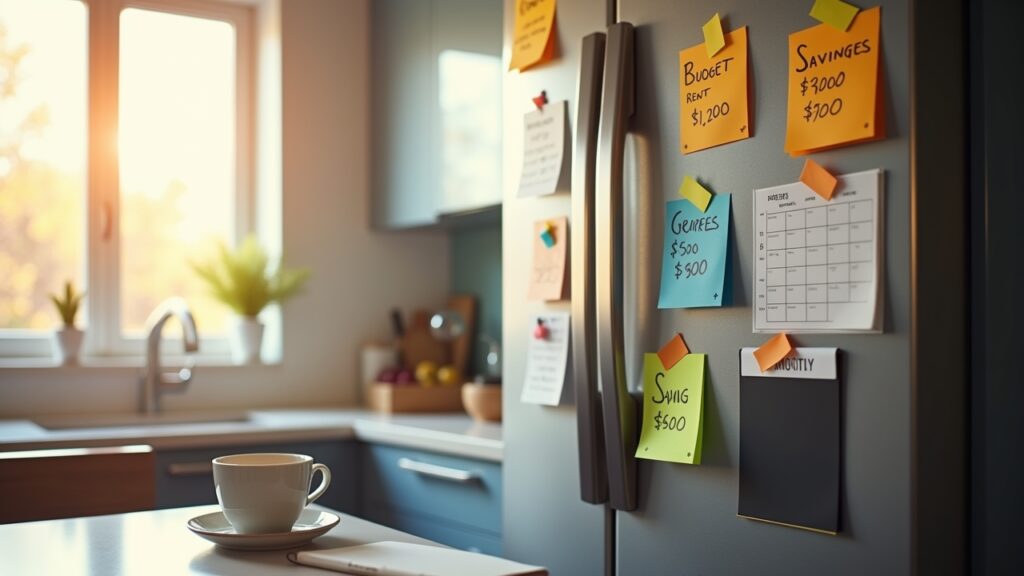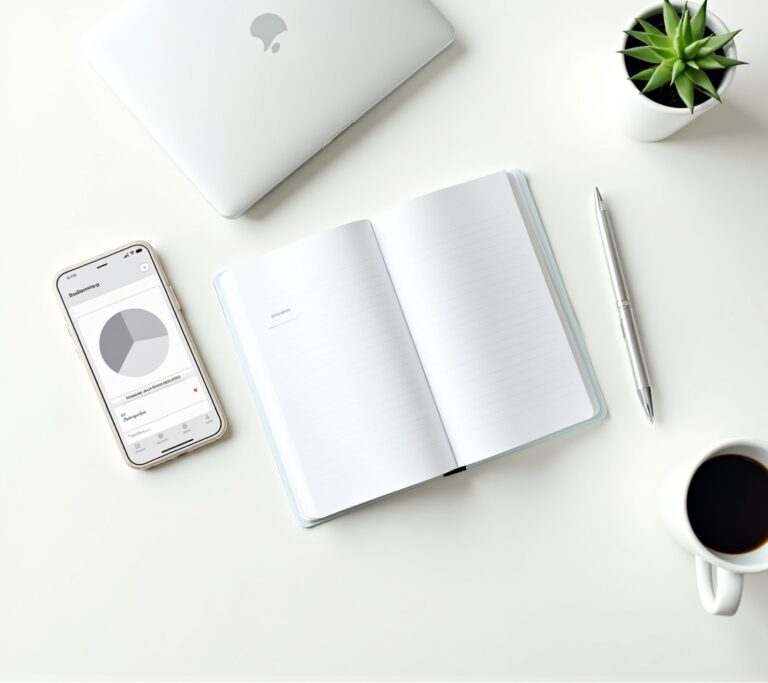Advertisements
Did you know that 65% of Americans don’t know how much they spent last month? I used to be one of them! After years of wondering where my paycheck disappeared to every month, I finally cracked the code on sticking to a budget. And let me tell you, it wasn’t pretty at first.
Learning how to stick to budget changed my entire financial life. It’s not just about restricting yourself – it’s about finally having control over your money instead of letting it control you. Trust me, if I can do this, anyone can!
Start With a Budget That Actually Makes Sense

The biggest mistake I made was trying to use someone else’s budget template. You know those perfect spreadsheets you find online? Yeah, they never worked for me. I’d download them, fill them out enthusiastically, then abandon them after two weeks.
What finally clicked was creating my own simple system. I grabbed a notebook (nothing fancy) and wrote down every single expense for a month. Coffee runs, streaming subscriptions, that random Amazon purchase at 2 AM – everything got tracked.
The results were shocking. I was spending $247 on coffee shops alone! Once I saw the real numbers, creating a realistic budget became way easier. Now I use the You Need A Budget (YNAB) app, but honestly, a simple spreadsheet works just as well.
The Envelope Method Still Works (Even Digitally)
My grandma used to keep cash in different envelopes for groceries, gas, and fun money. I thought it was old-fashioned until I tried a modern version. Now I use separate savings accounts for different goals – it’s basically digital envelopes!
Here’s what works for me:
- Rent/mortgage gets its own account with automatic transfers
- Grocery money goes to a debit card I only use for food
- Fun money stays in a separate account with a spending limit
- Emergency fund sits untouched (learned this the hard way)
The physical separation makes overspending so much harder. When your restaurant budget runs out, it’s actually gone – no borrowing from next month’s grocery money.
Track Everything for At Least 30 Days
I know, I know – tracking expenses sounds tedious. But here’s the thing: you can’t fix what you don’t measure. The first month I tracked everything, I discovered I was basically funding Starbucks’ expansion plans single-handedly.
Pick whatever method works for you. Some people love apps like Mint that automatically categorize spending. Others prefer good old pen and paper. I started with receipts stuffed in a shoebox (don’t judge!) before moving to an app.
The key is consistency. Even that $1.50 vending machine snack counts. Those little purchases add up faster than you’d think – mine totaled almost $200 a month!
Build in Some Fun Money (Seriously)
This might sound counterintuitive, but budgets that are too strict always fail. Trust me, I’ve tried the “no fun spending ever” approach. It lasted exactly 11 days before I went on a shopping spree that destroyed three months of progress.
Now I budget for fun stuff guilt-free. Maybe it’s $50 a month, maybe it’s $200 – whatever fits your situation. The point is having money you can spend on whatever without feeling bad. Want that overpriced latte? Use your fun money!
This approach has kept me on track for two years now. When you know you have some freedom built in, sticking to the rest of your budget feels less like punishment.
Automate the Boring Stuff
The less you have to think about your budget, the easier it is to stick to it. I automate everything possible – bills, savings, investments, even my “fun money” transfer. Set it up once and forget about it.
My checking account only holds what I can actually spend. Everything else gets whisked away automatically:
- Rent transfers on the 1st
- Savings moves on payday
- Investment contributions happen weekly
- Credit card payments are automated (but I still check them!)
This system has saved me from myself so many times. Can’t spend money that isn’t there, right?
Find an Accountability Partner
Budgeting alone is tough. Really tough. Having someone to share wins and struggles with makes a huge difference. My sister and I do monthly budget check-ins over coffee (budgeted for, of course!).
We celebrate the victories – like when I finally paid off that credit card – and troubleshoot the challenges. Last month she helped me figure out why my grocery spending kept creeping up. Turns out, shopping while hungry is still a terrible idea!
If family isn’t an option, try online communities. The r/personalfinance subreddit has been super helpful for tips and motivation.
Your Budget, Your Rules

Here’s what nobody tells you about budgeting: there’s no perfect system. What works for your coworker might be terrible for you. The trick is finding what fits your life and tweaking it until it sticks.
Maybe you need super detailed categories, or maybe three buckets work better. Perhaps cash envelopes are your thing, or maybe everything needs to be digital. The best budget is the one you’ll actually use consistently.
Remember, slipping up doesn’t mean starting over. I still blow my restaurant budget occasionally (hello, sushi cravings!). The difference now is I adjust and keep going instead of giving up entirely. Progress beats perfection every time.
Ready to take control of your finances? Start small – track just one category this week and see what you discover. For more practical money tips and real-life financial wins (and fails!), check out other posts on Cashflow Zen. We’re all figuring this out together!




[…] looking for more ways to optimize your finances and build that cashflow, check out other posts on Cashflow Zen – we’re all about making money management actually […]